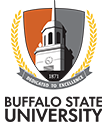EH&S provides fire and life safety related services for the campus. This includes:
* Conducting fire drills.
* Monitoring and inspecting facilities and activities to ensure fire prevention measures are in place and in compliance with fire code requirements.
* Monitoring and coordinating fire suppression, alarm, and notification system maintenance.
* Maintaining AEDs; and
* Conducting fire and life safety educational outreach and training activities.
Please refer to the EH&S Policies and Procedures page for welding and hot work permit requirements and protocols on campus. Please contact EH&S at 878-5447 for matters involving fire or life safety.
If you discover a fire:
1.Activate the nearest fire alarm.
2. Notify the University Police by dialing 878-6333. Give your location, the nature of the fire, and your name.
3. If individuals with special needs are in the area, help them evacuate the building ONLY IF you do not feel your life is in immediate danger. If you are unable to help them, seek professional firefighting personnel and inform them of the location of the person(s).
Fight the fire ONLY if:
1. The fire department has been notified of the fire, AND
2. The fire is small and confined to its area of origin, AND
3. You have a way out and can fight the fire with your back to the exit, AND
4. You have the proper extinguisher, in good working order, AND know how to use it.
5. If you are not sure of your ability or the fire extinguisher's capacity to contain the fire, leave the area.
If you hear a fire alarm:
1. Evacuate the area. Close windows, and close doors as you leave.
2. Leave the building and move away from exits and out of the way of emergency operations.
3. Assemble in a designated area.
4. Report to your supervisor or professor so he/she can determine that all personnel have evacuated your area.
5. Remain outside until competent authority (Police, Firefighters, Office of Environmental Health and Safety, or your supervisor) states that it is safe to re-enter.
Evacuation Routes:
1. Learn at least two escape routes, and emergency exits from your area.
2. Never use an elevator as part of your escape route.
3. Learn to activate a fire alarm.
4. Learn to recognize alarm sounds.
5. Take an active part in fire evacuation drills.
Department heads and/or faculty are responsible for ensuring complete evacuation of areas under their control. To assure the safety of our faculty and staff, fire safety equipment will be examined by the drill coordination staff for proper operation during drills. A minimum amount of extra time will be needed to perform this operation.
Procedures for Occupants:
1. When alarm is sounded, proceeded by the most direct means, in keeping with the equitable distribution of traffic, to the nearest exit and stand at least 25 yards outside of the building.
2. Leave the lights on.
3. Close all doors.
4. Turn off room fans: leave hood fans on.
5. Turn off all electrical and gas appliances.
6. Doors to the corridors are to be closed. In the event of an actual fire, leave doors in the immediate areas unlocked; and
7. Occupants may re-enter the building when ALL CLEAR is announced by college personnel conducting the drill.
Exceptions to Evacuations during Fire Drills Only:
1. Persons who are involved in critical lab experiments or lab processes, which cannot be left unattended, will be allowed to remain; and
2. Persons using a wheelchair or crutches will be allowed to remain, however, one able bodied person will be required to remain who would be responsible for said person, should evacuation be necessary.
If you have any questions, please contact David Pawlak at extension 5447. Thank you for your cooperation in this matter.
1. Extension cords are NOT permitted for use on campus. A surge protector with a longer cord is the correct device to use. Call our office with any questions about this issue, it is a common problem around campus!
2. It is a punishable crime to tamper with fire extinguishers. Notify EH&S during business hours, or University Police during non-business hours, if you suspect someone has tampered with an extinguisher, or it appears to be in need of repair.
3. Do not block exit doors or fire extinguishers.
4. Do not store things in hallways or stairwells
5. Check your electrical tools and devices regularly for signs of wear. If the cords are frayed or cracked, replace it. Replace any device or tool if it causes even small electrical shocks, overheats, shorts out or gives off smoke or sparks.
6. If an appliance has a three-prong plug, use it only in a three-slot outlet. Never force it to fit into a two-slot outlet.
7. Keep electrical appliances away from wet floors and counters; pay special care to electrical appliances in the bathroom and kitchen.
8. Do not wedge open stairwell doors. These doors are assigned to contain smoke and fire so that the stairwell can be used for a safe passage.
Fires are classified into four general categories depending on the type of material or fuel involved. The type of fire determines the type of extinguisher that should be used to extinguish it;
Class A fires involve materials such as wood, paper, and cloth which produce glowing embers or char;
Class B fires involve flammable gases, liquids, and greases, including gasoline and most hydrocarbon liquids which must be vaporized for combustion to occur;
Class C fires involve fires in live electrical equipment or in materials near electrically powered equipment; and
Class D fires involve combustible metals, such as magnesium, zirconium, potassium, and sodium.

